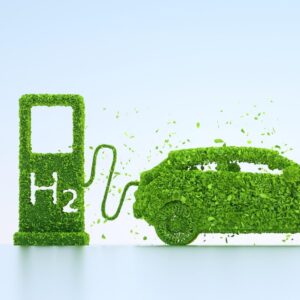- Centre clears ₹19,744-crore Green Hydrogen Mission
- India has just begun to generate green hydrogen with the objective of raising non-fossil energy capacity to 500 gigawatts by 2030
- Oil India Limited (OIL) commissioned India’s first 99.99% pure green hydrogen plant in eastern Assam’s Jorhat
- The mission will facilitate demand creation, production, utilisation and export of green hydrogen
IndiGlobal Bureau
 The Union Cabinet on Wednesday approved the National Green Hydrogen Mission, which is aimed at making India the global hub for the production of green hydrogen. The idea is to decarbonise major sectors of the economy and provide a fillip to alternative fuel.
The Union Cabinet on Wednesday approved the National Green Hydrogen Mission, which is aimed at making India the global hub for the production of green hydrogen. The idea is to decarbonise major sectors of the economy and provide a fillip to alternative fuel.
“The Union Cabinet, chaired by Prime Minister Narendra Modi, has approved National Green Hydrogen Mission,” informed Union Minister Anurag Thakur.
The National Hydrogen Mission was launched on August 15, 2021, with a view to cutting down carbon emissions and increasing the use of renewable sources of energy.
The Ministry of New and Renewable Energy (MNRE) will formulate the scheme guidelines for implementation.
The total outlay for the mission is ₹19,744 crore, out of which the government has allocated ₹17,490 crore for the Strategic Interventions for Green Hydrogen Transition (SIGHT) programme, ₹1,466 crore for the upcoming pilot projects, ₹400 crore for R&D, and ₹388 crore towards other mission components.
The government seeks to ramp up green hydrogen production capacity of at least 5 MMT (Million Metric Tonnes) per annum with an associated renewable energy capacity addition of about 125 GW in the country by 2030. It envisages an investment of over ₹8 lakh crore and creation of over 6 lakh jobs by 2030.
The government is looking at reducing fossil fuel imports of over ₹1 lakh crore and abatement of nearly 50 MMT of annual greenhouse gas emissions by 2030. The mission will have wide-ranging benefits — creation of export opportunities for green hydrogen and its derivatives; decarbonisation of industrial, mobility and energy sectors; reduction in dependence on imported fossil fuels and feedstock; development of indigenous manufacturing capabilities; creation of employment opportunities; and development of cutting-edge technologies, an official statement said.
 The mission will facilitate demand creation, production, utilisation and export of green hydrogen. Under the Strategic Interventions for Green Hydrogen Transition Programme (SIGHT), two distinct financial incentive mechanisms — targeting domestic manufacturing of electrolysers and production of green hydrogen — will be provided under the mission. The mission will also support pilot projects in emerging end-use sectors and production pathways. Regions capable of supporting large-scale production and/or utilisation of hydrogen will be identified and developed as Green Hydrogen Hubs, the Minister added. An enabling policy framework will be developed to support establishment of the green hydrogen ecosystem.
The mission will facilitate demand creation, production, utilisation and export of green hydrogen. Under the Strategic Interventions for Green Hydrogen Transition Programme (SIGHT), two distinct financial incentive mechanisms — targeting domestic manufacturing of electrolysers and production of green hydrogen — will be provided under the mission. The mission will also support pilot projects in emerging end-use sectors and production pathways. Regions capable of supporting large-scale production and/or utilisation of hydrogen will be identified and developed as Green Hydrogen Hubs, the Minister added. An enabling policy framework will be developed to support establishment of the green hydrogen ecosystem.
A robust standards and regulations framework will be also developed. Further, a public-private partnership framework for R&D (Strategic Hydrogen Innovation Partnership – SHIP) will be facilitated under the mission. R&D projects will be goal-oriented, time-bound, and suitably scaled up to develop globally competitive technologies. A coordinated skill development programme will also be undertaken. All concerned ministries, departments, agencies and institutions of the Central and State Governments will undertake focused and coordinated steps to ensure successful achievement of the mission objectives.
India has just begun to generate green hydrogen with the objective of raising non-fossil energy capacity to 500 gigawatts by 2030. At the World Economic Forum in Davos, Switzerland, in May 2022, Minister of Petroleum and Natural Gas Hardeep Singh Puri said India will emerge as the leader of green hydrogen by taking advantage of the current energy crisis across the globe.

